What Are Custom Transformers? When and Why You Need a Tailored Power Solution?
Are you struggling with power issues that standard transformers can’t solve? You’re not alone. Many industries face unique challenges that off-the-shelf solutions simply can’t address. But what if there was a way to get a transformer perfectly tailored to your specific needs?
Custom transformers are power transformers specifically designed to meet unique voltage, load, or environmental requirements that standard models cannot fulfill. They are tailored solutions for industries with special power needs, such as unusual voltages, extreme environments, or specific safety standards. Custom transformers can improve efficiency, safety, and performance in applications where standard units fall short, making them invaluable for specialized industrial, medical, and technological applications.
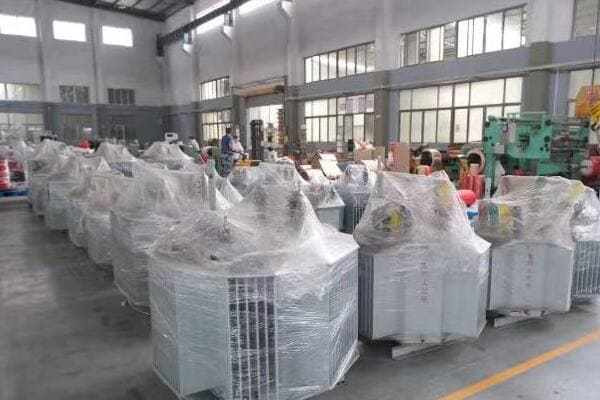
In this comprehensive guide, I’ll walk you through the world of custom transformers. We’ll explore what they are, when you need them, and how they can dramatically improve your power system’s performance and safety. Whether you’re an engineer facing a unique power challenge or a project manager looking for the best solution, this article will provide valuable insights to help you make informed decisions about custom transformer solutions.
What Is a Custom Transformer?
Have you ever found yourself in a situation where standard transformers just don’t cut it? Maybe you’re dealing with an unusual voltage requirement or a harsh environment that off-the-shelf units can’t handle. This is where custom transformers come into play. But what exactly is a custom transformer, and how does it differ from standard models?
A custom transformer is a power transformer specifically designed to meet unique voltage, load, or environmental requirements that standard models cannot fulfill. These transformers are tailored to the exact specifications of a particular application, offering optimized performance, size, efficiency, and safety features. Custom transformers can vary in voltage ratings, physical dimensions, cooling methods, and even incorporate special materials to withstand extreme conditions.
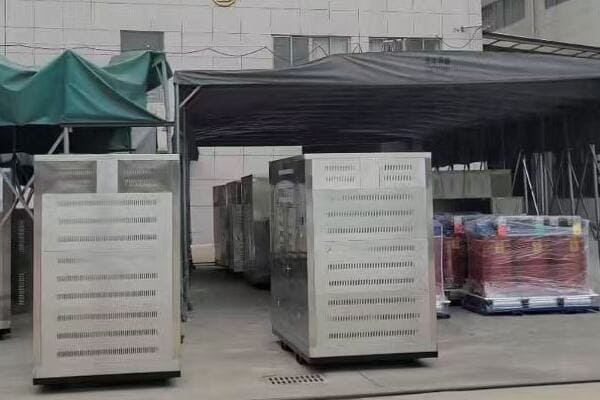
Understanding Custom Transformers
Let’s break down the key aspects of custom transformers:
- Definition and Purpose
- Key Customizable Features
- Design Process Overview
- Advantages Over Standard Models
- Common Applications
Definition and Purpose
A custom transformer is:
- Designed for specific application requirements
- Built to order, not mass-produced
- Optimized for unique operational conditions
I recently worked on a project for a specialized manufacturing facility where we needed a transformer that could handle both 50Hz and 60Hz frequencies. This level of flexibility isn’t available in standard models, showcasing the need for custom solutions.
Key Customizable Features
Common areas of customization include:
- Voltage ratings and taps
- Physical dimensions and form factor
- Cooling systems
- Insulation materials
- Environmental protection (e.g., for marine or explosive atmospheres)
During a recent consultation for a data center in the Middle East, we designed a custom transformer with enhanced cooling capabilities to withstand the extreme desert heat, a feature not typically found in standard units.
Design Process Overview
The custom transformer design process typically involves:
- Detailed client requirement analysis
- Electrical and mechanical design
- Material selection
- Prototype development and testing
- Final production and quality assurance
Here’s a simplified view of the custom transformer design process:
| Stage | Description | Key Considerations |
|---|---|---|
| Requirements Gathering | Understand client needs | Voltage, load, environment |
| Design | Electrical and mechanical planning | Efficiency, size, safety |
| Prototyping | Build and test initial model | Performance verification |
| Production | Manufacture final product | Quality control, standards compliance |
Advantages Over Standard Models
Benefits of custom transformers:
- Optimized performance for specific applications
- Improved efficiency and reduced losses
- Better fit for space constraints or unusual environments
- Compliance with specific industry standards or regulations
Common Applications
Industries often requiring custom transformers:
- Renewable energy (wind, solar)
- Oil and gas
- Marine and offshore
- Medical equipment
- Specialized manufacturing
Key points about custom transformers:
- They are designed for specific, unique requirements
- Customization can cover various aspects from electrical to physical features
- The design process is collaborative and iterative
- They offer advantages in performance and efficiency for specialized applications
- Custom transformers are common in industries with non-standard power needs
In my experience, the value of custom transformers becomes particularly evident in challenging projects. I recall a case where a client in the aerospace industry needed a transformer that could withstand extreme vibration and altitude changes. By working closely with their engineers, we developed a custom solution that not only met their unique requirements but also improved the overall reliability of their system.
As we move on to discuss when you might need a custom transformer, keep in mind that these tailored solutions are about more than just unusual specifications. They’re about optimizing your entire power system for peak performance, efficiency, and reliability in your specific operating conditions.
When Do You Need a Custom Transformer?
Have you ever found yourself in a situation where standard transformers just don’t seem to fit your project’s requirements? You’re not alone. Many engineers and project managers face scenarios where off-the-shelf solutions fall short. But how do you know when it’s time to consider a custom transformer?
You need a custom transformer when your power requirements go beyond what standard models can offer. This typically includes scenarios with unusual voltage or frequency needs, extreme environmental conditions, strict space constraints, or specific industry regulations. Custom transformers are also necessary when you need to optimize efficiency for unique load profiles, require special safety features, or need to integrate with non-standard systems. Essentially, if your power needs are unique, a custom transformer might be your best solution.

Scenarios Requiring Custom Transformers
Let’s explore common situations where custom transformers are necessary:
- Unusual Voltage or Frequency Requirements
- Extreme Environmental Conditions
- Space Constraints
- Specific Industry Regulations
- Unique Load Profiles
Unusual Voltage or Frequency Requirements
When standard doesn’t fit:
- Non-standard voltage levels
- Multiple input or output voltages
- Frequency conversion needs (e.g., 50Hz to 60Hz)
I recently worked on a project for an international manufacturing facility that needed to operate machinery from different global regions. We designed a custom transformer capable of handling multiple input voltages and frequencies, ensuring seamless operation regardless of the equipment’s origin.
Extreme Environmental Conditions
Adapting to challenging environments:
- High temperature or humidity
- Corrosive atmospheres
- High altitude operations
- Underwater or marine applications
During a recent offshore wind farm project, we developed custom transformers designed to withstand saltwater spray, high winds, and constant vibration – conditions that would quickly deteriorate standard units.
Space Constraints
When size matters:
- Compact designs for limited spaces
- Unusual form factors to fit specific enclosures
- Integration with existing equipment
Here’s a quick overview of how custom transformers can address space issues:
| Constraint | Custom Solution | Benefit |
|---|---|---|
| Height Limit | Low-profile design | Fits in restricted vertical spaces |
| Narrow Spaces | Elongated form factor | Utilizes available horizontal space |
| Irregular Shapes | Customized enclosure | Integrates with non-standard equipment |
Specific Industry Regulations
Meeting stringent standards:
- Medical equipment safety requirements
- Military and aerospace specifications
- Nuclear power plant regulations
Unique Load Profiles
Optimizing for specific usage patterns:
- Pulsed power applications
- Highly variable loads
- Energy-efficient designs for specific duty cycles
Key indicators that you need a custom transformer:
- Your voltage or frequency requirements don’t match standard offerings
- Your operating environment is extreme or unusual
- You have strict space limitations that standard units can’t meet
- You need to comply with specific industry regulations
- Your load profile is unique and requires optimized efficiency
In my experience, the need for custom transformers often becomes apparent when standard solutions create inefficiencies or compromises. I recall a project for a data center where the client initially tried to use multiple standard transformers to meet their power needs. This approach led to increased complexity, higher losses, and maintenance issues. By switching to a custom-designed transformer, we were able to simplify their system, improve efficiency, and reduce long-term operational costs.
For example, in a recent renewable energy project, we faced the challenge of integrating a large solar farm with an existing grid that had fluctuating voltage levels. A custom transformer with advanced voltage regulation capabilities was the key to ensuring stable power output and maximizing energy harvesting efficiency.
As we move on to discuss why custom transformers can improve performance and safety, keep these scenarios in mind. Understanding when you need a custom solution is the first step towards optimizing your power system for your specific needs and operating conditions.
Why a Custom Transformer Can Improve Performance and Safety?
Have you ever wondered why some power systems seem to operate more efficiently and safely than others? The secret often lies in the use of custom transformers. But how exactly do these tailored solutions enhance performance and safety in ways that standard transformers can’t?
Custom transformers can significantly improve performance and safety by optimizing design for specific operational requirements. They offer enhanced efficiency by minimizing losses for unique load profiles, improved thermal management for challenging environments, and tailored safety features for specific industry standards. Custom transformers can also provide better voltage regulation, reduced harmonics, and improved overload capacity. These benefits lead to increased reliability, longer equipment lifespan, and often result in lower total cost of ownership despite higher initial investment.

Key Improvements Offered by Custom Transformers
Let’s explore the main areas where custom transformers excel:
- Enhanced Efficiency
- Improved Thermal Management
- Tailored Safety Features
- Better Voltage Regulation
- Reduced Harmonics and EMI
Enhanced Efficiency
Optimizing for specific needs:
- Designed for actual load profile, not generic scenarios
- Reduced core and copper losses
- Optimized transformer size and weight
I recently worked on a project for a renewable energy facility where we designed a custom transformer that improved overall system efficiency by 2.5%. This seemingly small improvement translated to significant energy savings over the system’s lifetime.
Improved Thermal Management
Adapting to environmental challenges:
- Custom cooling systems for extreme temperatures
- Specialized insulation for high-humidity environments
- Optimized heat dissipation in confined spaces
During a recent data center upgrade, we implemented a custom transformer with advanced liquid cooling, allowing for higher power density and improved reliability in the facility’s hot-aisle containment system.
Tailored Safety Features
Meeting specific safety standards:
- Customized protection against overloads and short circuits
- Enhanced fire safety features for sensitive environments
- Specialized designs for hazardous locations
Here’s a comparison of safety features in standard vs custom transformers:
| Safety Aspect | Standard Transformer | Custom Transformer |
|---|---|---|
| Overload Protection | Generic settings | Tailored to specific load profile |
| Fire Safety | Basic compliance | Enhanced features for specific environments |
| EMI Shielding | Standard levels | Optimized for sensitive equipment |
Better Voltage Regulation
Maintaining stable output:
- Designed for specific input voltage fluctuations
- Improved tap changing mechanisms
- Optimized for dynamic load changes
Reduced Harmonics and EMI
Addressing power quality issues:
- Custom designs to mitigate harmonic distortion
- Enhanced EMI shielding for sensitive environments
- Integration of harmonic mitigation techniques
Key benefits of custom transformers for performance and safety:
- Efficiency optimized for actual operating conditions
- Thermal management tailored to specific environments
- Safety features designed for particular industry needs
- Improved voltage stability under varying conditions
- Enhanced power quality through reduced harmonics and EMI
In my experience, the performance and safety improvements of custom transformers often lead to significant long-term benefits. I recall a project for a pharmaceutical manufacturing facility where we replaced a standard transformer with a custom unit designed to handle their specific load profile and stringent cleanliness requirements. The result was not only improved energy efficiency but also enhanced production reliability due to better voltage stability and reduced risk of contamination from transformer failures.
For example, in a recent project for an offshore oil platform, we designed a custom transformer that could withstand the corrosive sea air, extreme temperatures, and constant vibration. This tailored solution not only improved the platform’s operational efficiency but also significantly enhanced safety by reducing the risk of electrical fires in this hazardous environment.
As we move on to discuss how custom transformers are designed and manufactured, keep in mind these performance and safety benefits. Understanding the potential improvements can help you better appreciate the value of the custom design process and its impact on your specific application.
How Custom Transformers Are Designed and Manufactured?
Have you ever wondered about the process behind creating a transformer that perfectly fits your unique needs? The journey from concept to final product in custom transformer manufacturing is a fascinating blend of engineering expertise and precision craftsmanship. But what exactly goes into designing and building these tailored power solutions?
Custom transformers are designed and manufactured through a collaborative process involving detailed client consultations, specialized engineering, and precision manufacturing. The process typically includes requirements analysis, electrical and mechanical design, material selection, prototyping, testing, and final production. Each step is tailored to meet specific performance, safety, and environmental needs. Advanced software tools, such as finite element analysis, are often used to optimize designs before production begins. This meticulous process ensures that the final product meets all client specifications and regulatory standards.
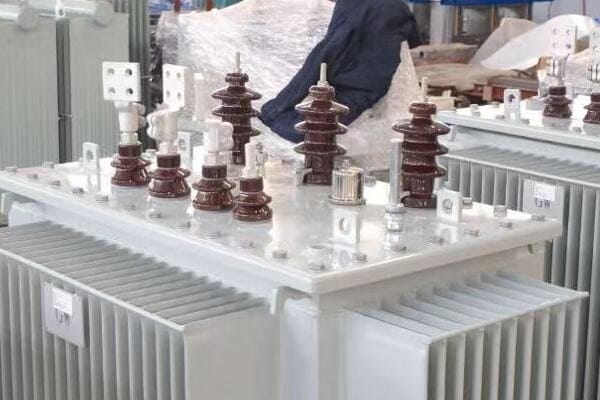
The Custom Transformer Creation Process
Let’s break down the key stages:
- Requirements Analysis and Specification
- Electrical and Mechanical Design
- Material Selection
- Prototyping and Testing
- Final Production and Quality Assurance
Requirements Analysis and Specification
Understanding client needs:
- Detailed discussions with client engineers
- Analysis of operational environment and constraints
- Definition of performance requirements and standards
I recently started a project for a solar power plant where the initial consultation revealed unique voltage fluctuation challenges. This insight was crucial in shaping our design approach for a custom transformer that could handle these variations efficiently.
Electrical and Mechanical Design
Creating the blueprint:
- Core and winding design optimization
- 3D modeling for mechanical fit and cooling
- Finite element analysis for electromagnetic and thermal performance
During a recent design phase for a marine transformer, we used advanced simulation software to model salt spray exposure, ensuring our design could withstand years of corrosive environments.
Material Selection
Choosing the right components:
- Selection of core materials (e.g., silicon steel, amorphous metals)
- Winding conductor choice (copper vs aluminum)
- Insulation and cooling system materials
Here’s a simplified view of material considerations:
| Component | Options | Selection Criteria |
|---|---|---|
| Core | Silicon Steel, Amorphous Metal | Efficiency, Cost, Size |
| Windings | Copper, Aluminum | Conductivity, Weight, Cost |
| Insulation | Epoxy, Oil, Gas | Temperature Class, Environment |
Prototyping and Testing
Validating the design:
- Building of prototype units
- Comprehensive testing under simulated conditions
- Design refinement based on test results
Final Production and Quality Assurance
Bringing the design to life:
- Scaling up for production
- Implementing strict quality control measures
- Final testing and certification
Key aspects of custom transformer design and manufacturing:
- Thorough understanding of client requirements is crucial
- Advanced design tools ensure optimal performance
- Material selection significantly impacts transformer characteristics
- Prototyping and testing are vital for design validation
- Rigorous quality control ensures the final product meets all specifications
In my experience, the design and manufacturing process for custom transformers is where engineering creativity truly shines. I recall a project for a high-altitude research facility where we had to design a transformer that could operate efficiently in extremely thin air. The process involved numerous design iterations and specialized testing in a hypobaric chamber to ensure performance at high altitudes.
For example, in a recent project for an electric vehicle charging station network, we developed a custom transformer design that could handle rapid load changes and high-frequency harmonics. The design process involved extensive computer modeling and real-world testing with various EV models to ensure optimal performance across different charging scenarios.
As we move on to discuss industries that commonly require tailored transformer solutions, keep in mind the complexity and precision involved in creating these custom units. This understanding will help you appreciate why certain industries rely heavily on custom transformers to meet their unique power needs.
Industries That Commonly Require Tailored Transformer Solutions?
Have you ever wondered why some industries seem to always need specialized power equipment? The answer often lies in their unique operational demands and environments. But which industries are most likely to require custom transformers, and why are standard solutions insufficient for their needs?
Industries that commonly require custom transformers include renewable energy, oil and gas, marine and offshore, healthcare, aerospace, and specialized manufacturing. These sectors often deal with unusual power requirements, extreme environments, strict regulations, or the need for high efficiency and reliability. For example, offshore wind farms need transformers that can withstand saltwater and high winds, while medical imaging equipment requires ultra-stable power with minimal electromagnetic interference. Custom transformers in these industries ensure optimal performance, safety, and compliance with specific standards.
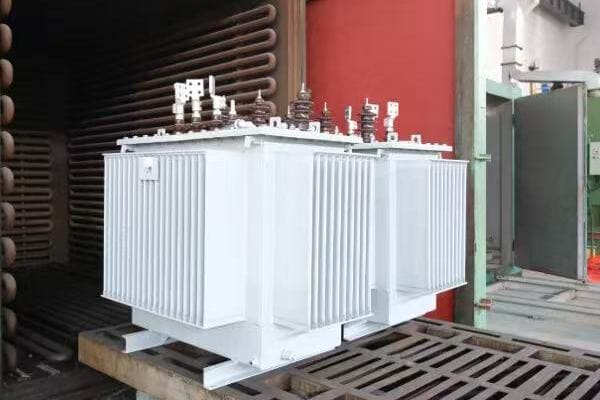
Exploring Industries with Unique Transformer Needs
Let’s examine the key industries and their specific requirements:
- Renewable Energy
- Oil and Gas
- Marine and Offshore
- Healthcare and Medical Equipment
- Aerospace and Defense
- Specialized Manufacturing
Renewable Energy
Unique challenges in green power:
- Wind farms: Transformers for variable speed generators
- Solar plants: Inverter transformers with high efficiency
- Hydroelectric: Generators with specific voltage and frequency needs
I recently worked on a floating solar farm project where we designed custom transformers that could operate efficiently while dealing with constant motion and high humidity. This unique environment required innovative cooling and insulation solutions.
Oil and Gas
Demanding environments in energy extraction:
- Offshore platforms: Compact, explosion-proof designs
- Refineries: High-temperature operation capabilities
- Remote locations: Robust, low-maintenance transformers
During a recent project for a deep-sea drilling operation, we developed a custom transformer that could withstand extreme pressures and corrosive environments, ensuring reliable power supply in these challenging conditions.
Marine and Offshore
Battling the elements at sea:
- Ships: Compact designs with vibration resistance
- Offshore wind: Salt-spray resistant transformers
- Underwater installations: Pressure-resistant, waterproof units
Here’s a quick overview of marine transformer requirements:
| Application | Key Requirements | Custom Features |
|---|---|---|
| Cruise Ships | Compact size, low noise | Special insulation, vibration dampening |
| Offshore Platforms | Corrosion resistance | Specialized coatings, sealed designs |
| Underwater Equipment | Pressure resistance | Reinforced tanks, special sealing |
Healthcare and Medical Equipment
Precision power for critical care:
- MRI machines: Ultra-stable power with low EMI
- X-ray equipment: High-voltage, pulsed power supplies
- Mobile medical units: Compact, multi-voltage transformers
Aerospace and Defense
High-performance in extreme conditions:
- Aircraft: Lightweight, high-altitude operation
- Military vehicles: Ruggedized designs for harsh environments
- Radar systems: Specialized high-frequency transformers
Specialized Manufacturing
Powering unique production processes:
- Semiconductor fabrication: Ultra-clean power supplies
- Electric arc furnaces: High-current, pulsed-power transformers
- Laser cutting systems: Precise, stable power delivery
Key points about industries requiring custom transformers:
- Renewable energy needs transformers adapted to variable power generation
- Oil and gas industry requires robust designs for harsh environments
- Marine applications demand corrosion and vibration resistance
- Healthcare equipment needs precise, stable power with low interference
- Aerospace and defense require lightweight, high-performance solutions
- Specialized manufacturing often needs unique power characteristics
In my experience, the diversity of custom transformer applications across these industries is fascinating. I recall a project for a cutting-edge quantum computing facility where we had to design a transformer that could provide extremely stable power with near-zero electromagnetic interference. This ultra-specialized requirement pushed the boundaries of transformer design and manufacturing capabilities.
For example, in a recent aerospace project, we developed a custom transformer for a high-altitude research aircraft. The challenge was to create a unit that was not only incredibly lightweight but also capable of operating efficiently in the thin air of the upper atmosphere. This required innovative materials and cooling designs that went far beyond standard transformer specifications.
As we move on to compare custom and standard transformers, keep in mind the diverse and demanding applications we’ve discussed. Understanding these industry-specific needs will help you appreciate why custom solutions are often necessary and how they differ from off-the-shelf options.
Custom vs Standard Transformers: What’s the Right Choice?
Are you torn between choosing a standard transformer or investing in a custom solution? This decision can significantly impact your project’s success, efficiency, and long-term costs. But how do you know which option is right for your specific needs?
Choosing between custom and standard transformers depends on your specific requirements, budget, and timeline. Standard transformers are typically less expensive, readily available, and suitable for common applications. Custom transformers, while more costly and time-consuming to produce, offer optimized performance, efficiency, and tailored solutions for unique or demanding applications. Custom options are ideal when standard units can’t meet specific voltage, size, environmental, or regulatory requirements. The right choice balances performance needs with cost and time constraints.
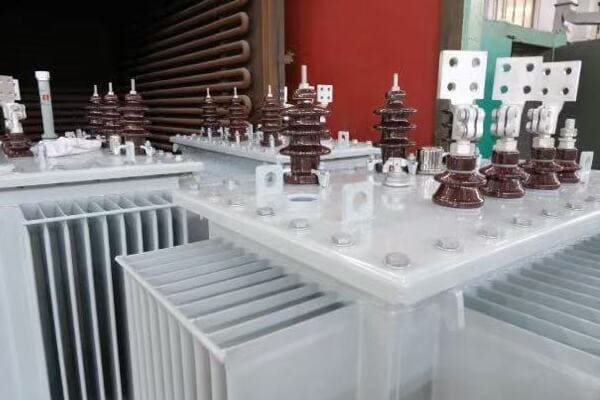
Comparing Custom and Standard Transformers
Let’s break down the key factors to consider:
- Performance and Efficiency
- Cost Considerations
- Lead Time and Availability
- Flexibility and Adaptability
- Regulatory Compliance and Certifications
Performance and Efficiency
Evaluating operational benefits:
- Standard: Designed for average conditions, may have compromises
- Custom: Optimized for specific operating conditions, potentially higher efficiency
I recently analyzed a data center project where replacing standard transformers with custom units resulted in a 3% efficiency gain, translating to significant energy savings over the facility’s lifetime.
Cost Considerations
Balancing initial and long-term expenses:
- Standard: Lower upfront costs, potentially higher operating costs
- Custom: Higher initial investment, often lower long-term costs due to efficiency
During a recent industrial upgrade, we found that while the custom transformer cost 30% more upfront, its improved efficiency and longer lifespan resulted in a positive ROI within 4 years.
Lead Time and Availability
Timing your project needs:
- Standard: Readily available, shorter lead times
- Custom: Longer production time, typically 8-16 weeks or more
Here’s a simplified comparison of lead times:
| Transformer Type | Typical Lead Time | Best For |
|---|---|---|
| Standard | 1-4 weeks | Urgent replacements, common applications |
| Semi-Custom | 4-8 weeks | Minor modifications to standard designs |
| Fully Custom | 8-16+ weeks | Unique specifications, complex projects |
Flexibility and Adaptability
Meeting current and future needs:
- Standard: Limited options, may require compromises
- Custom: Tailored to specific needs, can accommodate future changes
Regulatory Compliance and Certifications
Ensuring standards are met:
- Standard: Generally compliant with common regulations
- Custom: Can be designed to meet specific or unusual standards
Key points in choosing between custom and standard transformers:
- Custom transformers offer optimized performance for specific needs
- Standard units are more cost-effective for common applications
- Lead time is significantly longer for custom transformers
- Custom designs offer greater flexibility for unique or changing requirements
- Regulatory compliance can be more precisely met with custom units
In my experience, the choice between custom and standard transformers often comes down to a careful analysis of long-term benefits versus immediate needs. I recall a project for a renewable energy installation where we initially considered standard transformers to save on upfront costs. However, after a detailed efficiency analysis, we found that custom units designed for the specific wind turbine output characteristics would provide substantial long-term energy savings, justifying the higher initial investment.
For example, in a recent retrofit of an old industrial facility, we faced the challenge of fitting new transformers into limited spaces with unusual voltage requirements. While standard units were initially considered to save time, we ultimately opted for custom transformers. This decision not only solved the immediate space and voltage issues but also allowed for future capacity expansion, proving to be a more cost-effective solution in the long run.
As we conclude our discussion, remember that the choice between custom and standard transformers is not always straightforward. It requires a thorough understanding of your current needs, future plans, and the specific constraints of your project. Careful consideration of these factors will help ensure you make the best decision for your unique situation.
Conclusion: Is a Custom Transformer Worth It for Your Project?
Custom transformers offer tailored solutions for unique power needs, providing optimized performance, efficiency, and safety in specialized applications. While they require higher initial investment and longer lead times, custom units can deliver significant long-term benefits in challenging environments or specific industries. The decision to use a custom transformer should be based on a careful analysis of your project’s unique requirements, considering factors like performance needs, regulatory compliance, and long-term operational costs.
Remember, at chbeb-ele, we’re not just sharing information – we’re empowering you to be part of the solution in creating a secure, clean, and efficient energy future. Let’s continue this journey together.
Recent Post
Quick Message
Request A free quote
We'd like to work with you
- +86 15558785111
- chbebgroup@chbebpower.com
- +86 15558785111
What We Do
CHINA BEI ER BIAN (CHBEB) GROUP, with 218 million in registered capital, originated from Beijing Beierbian Transformer Group. Headquartered in Beijing for R&D, it operates major production bases in Nanjing and Yueqing, producing high-quality products.
Latest Post
Latest Product
Contact Us
- +86 15558785111
- chbebgroup@chbebpower.com
- +86 15558785111
BeiJing
No 3,RongJing East Road,BeiJing Economic Technological Development Area,BeiJing,China
JiangSu
No 7️Xiangfeng Road,Jiangning,NanJing,JiangSu,China
WenZhou
No.211, Wei 16 Road, Industrial Zone, Yueqing, Wenzhou, Zhejiang, China.
XiangYang Industrial Zone ,YueQing,WenZhou,ZheJiang,China

